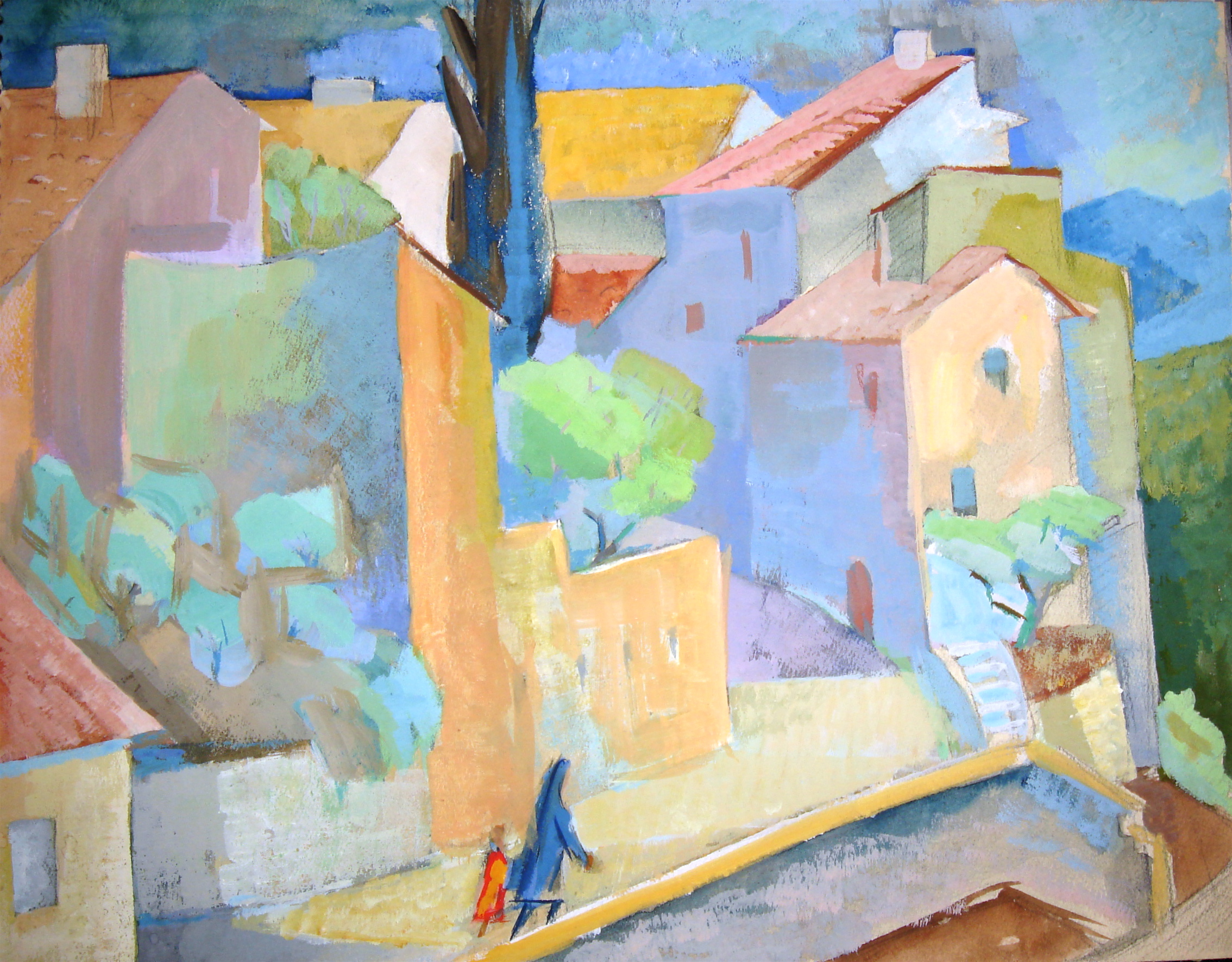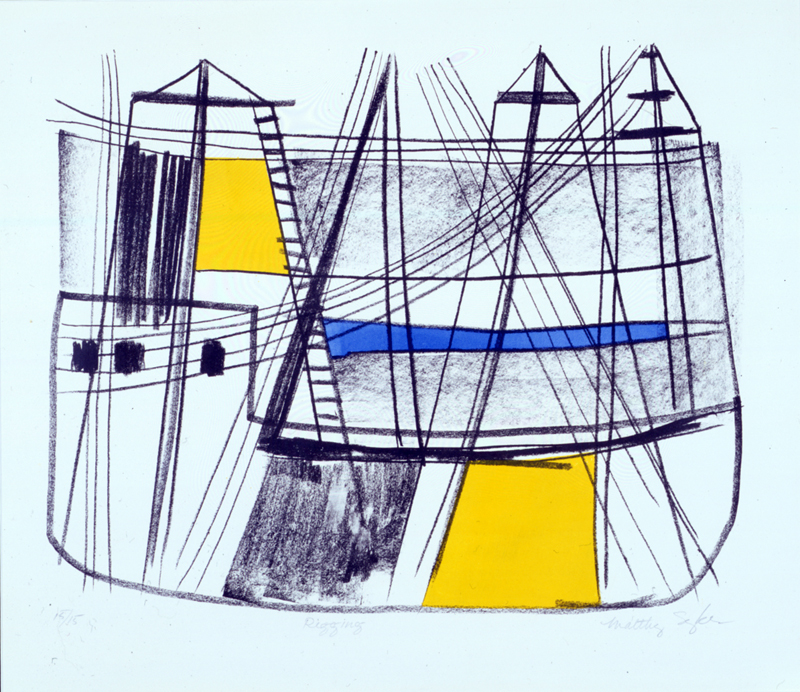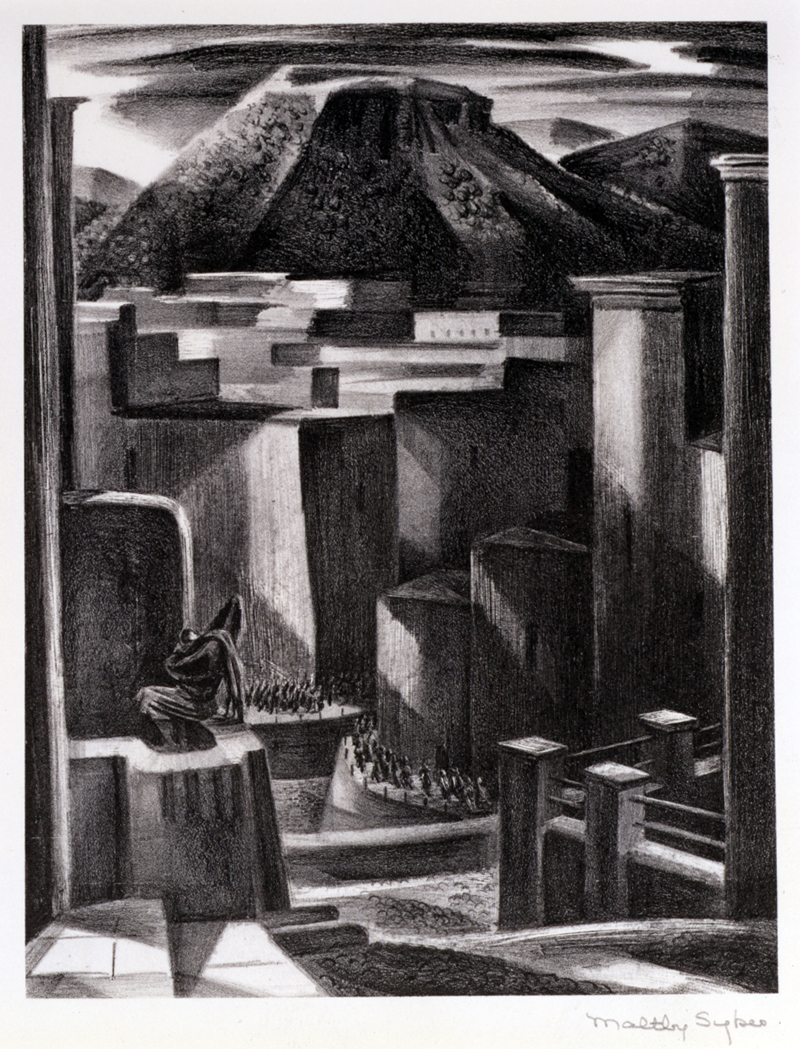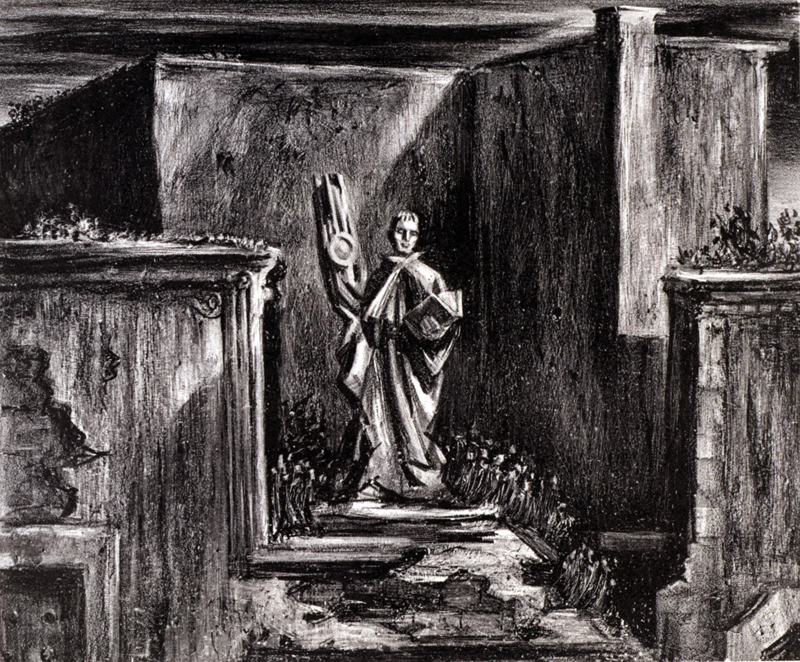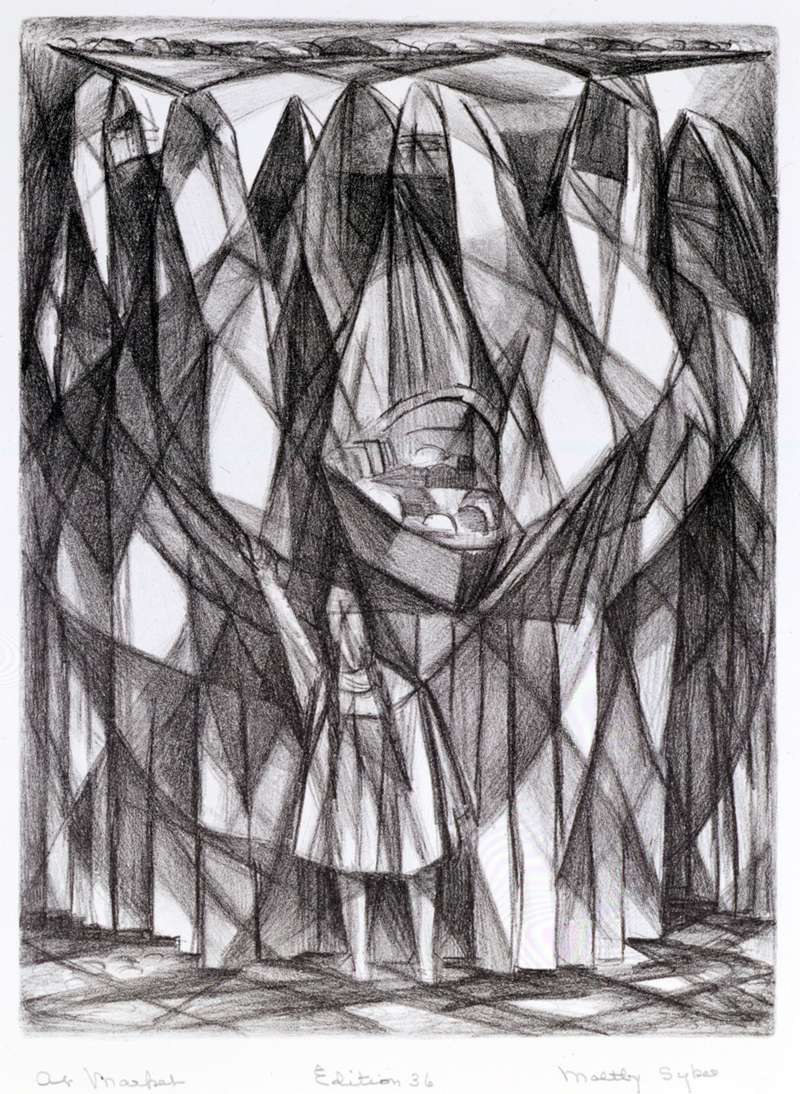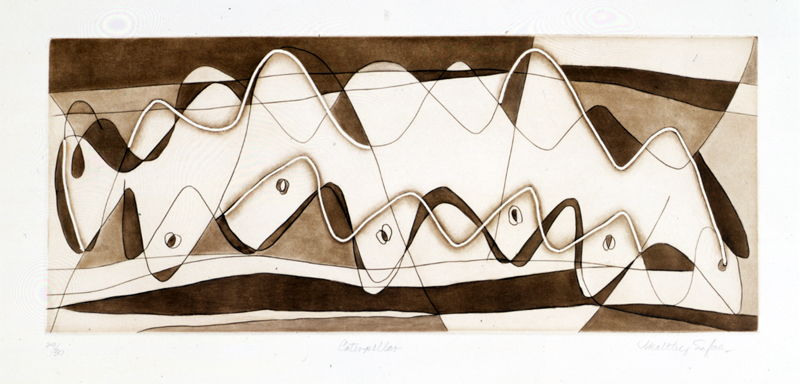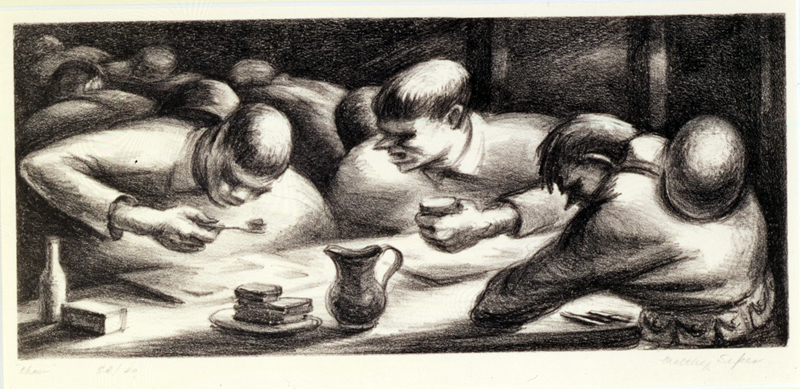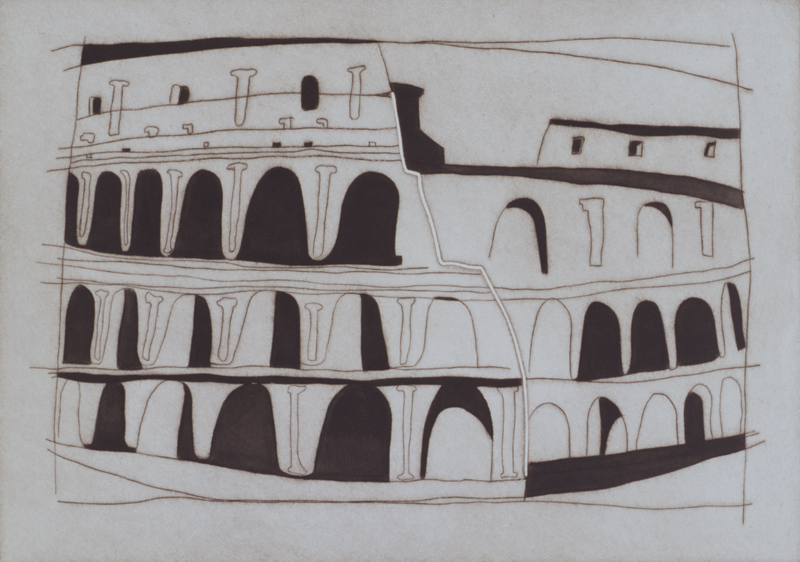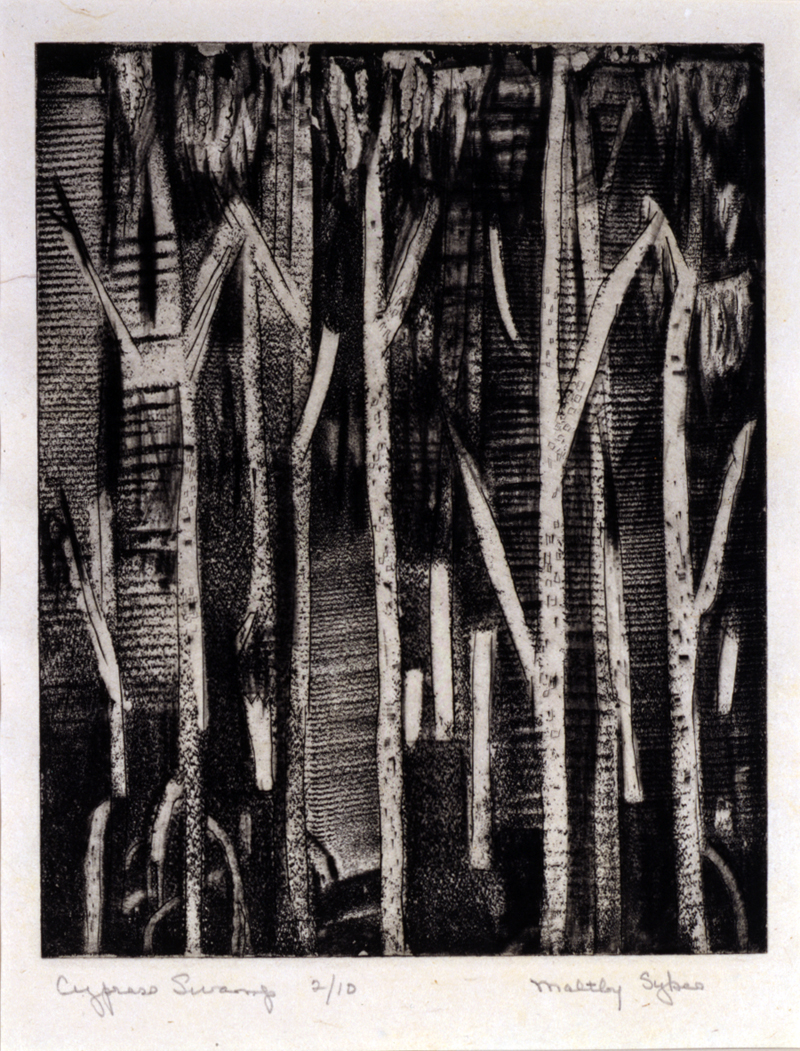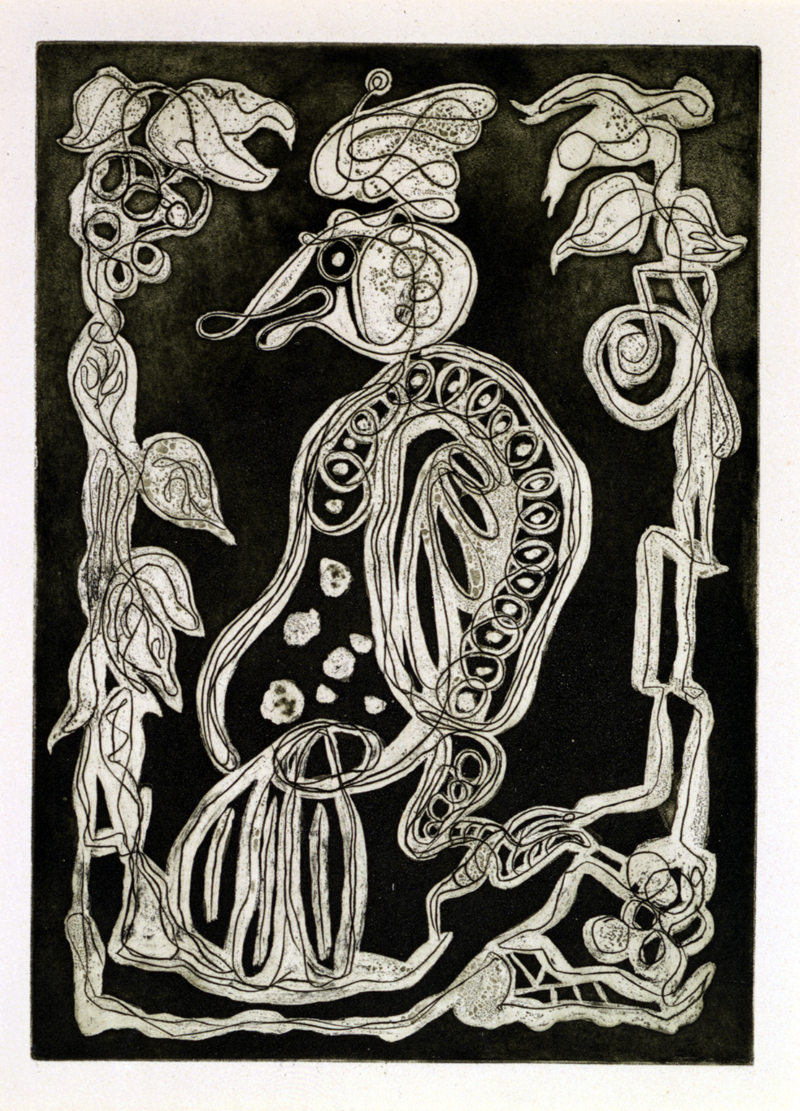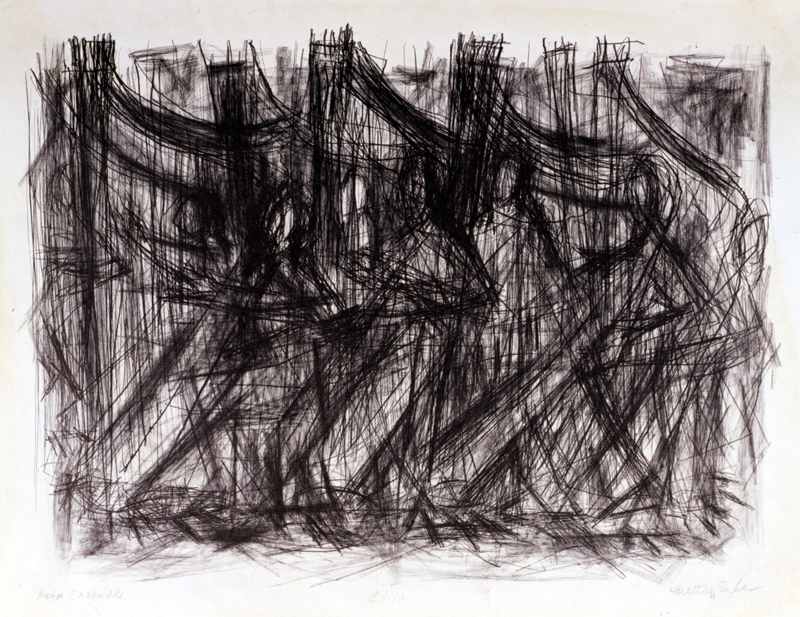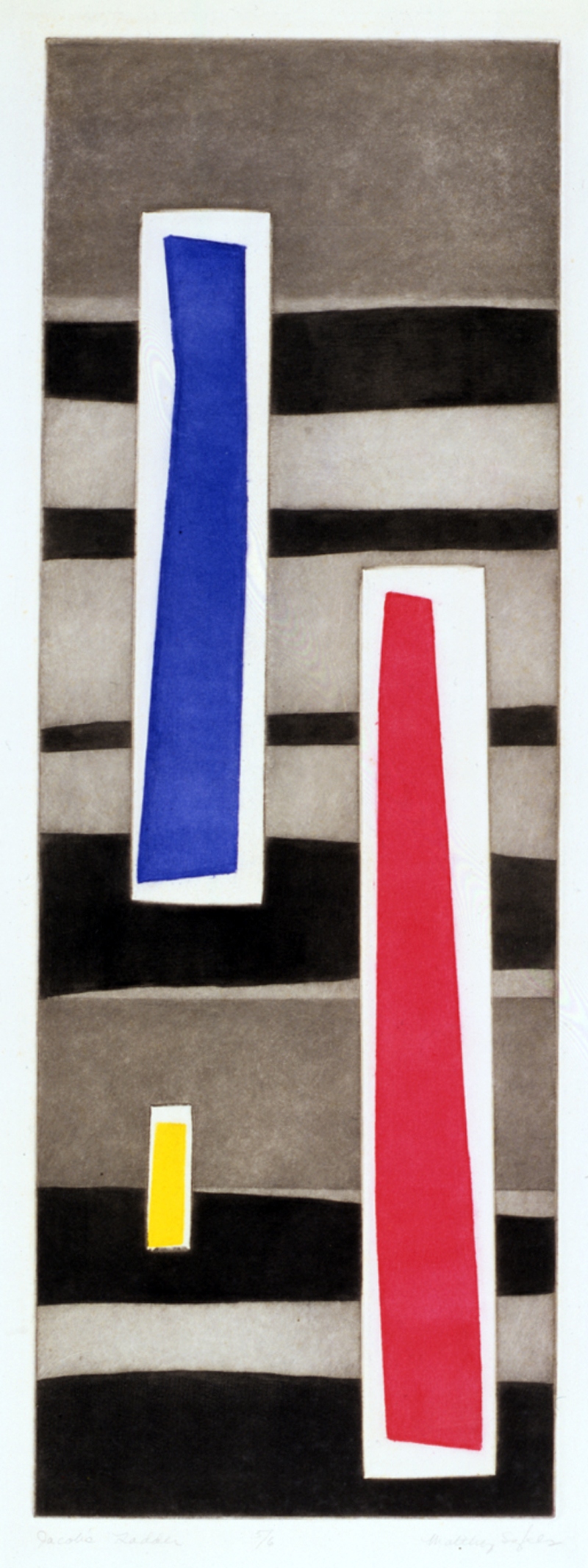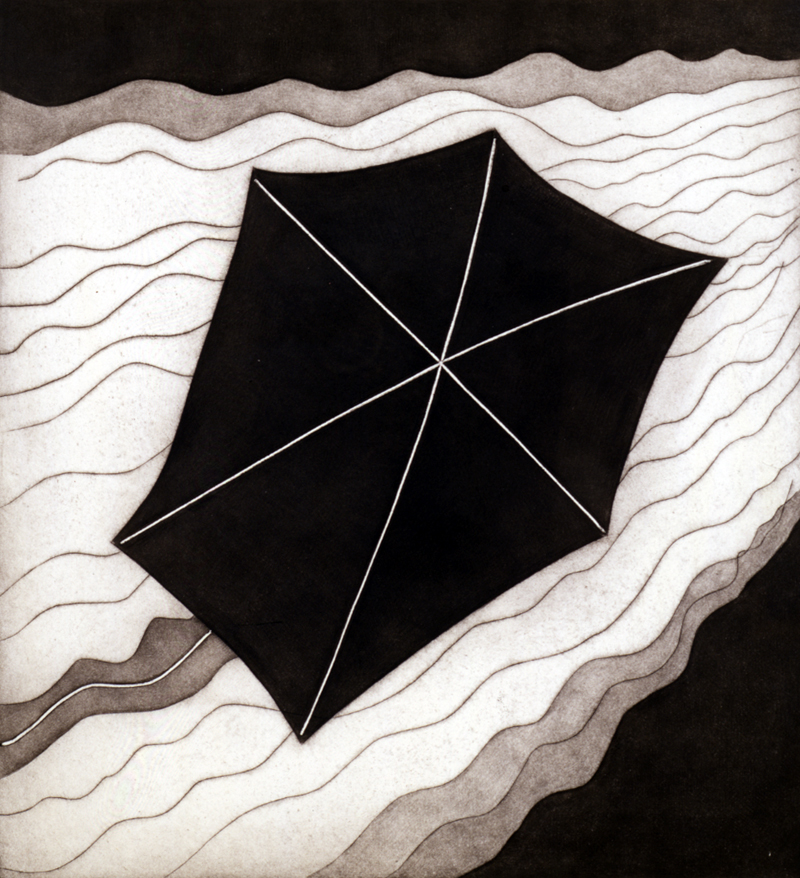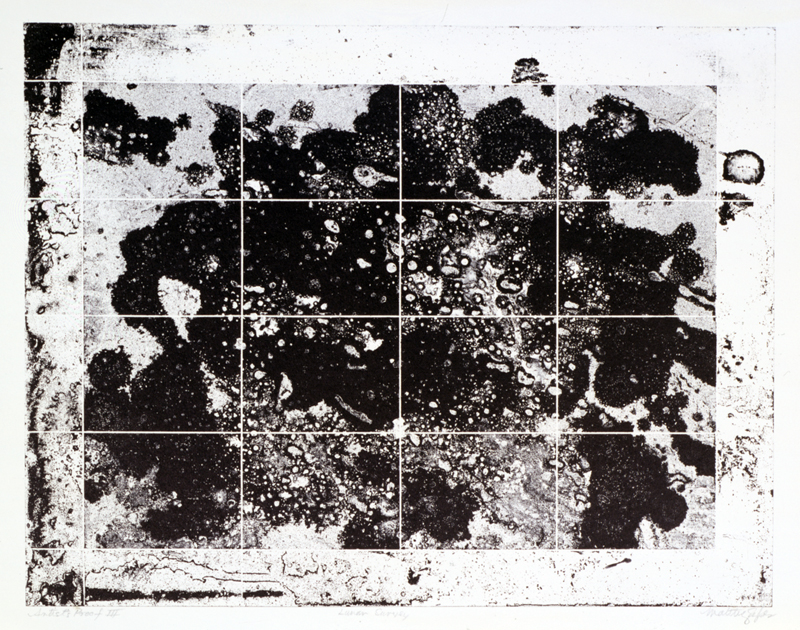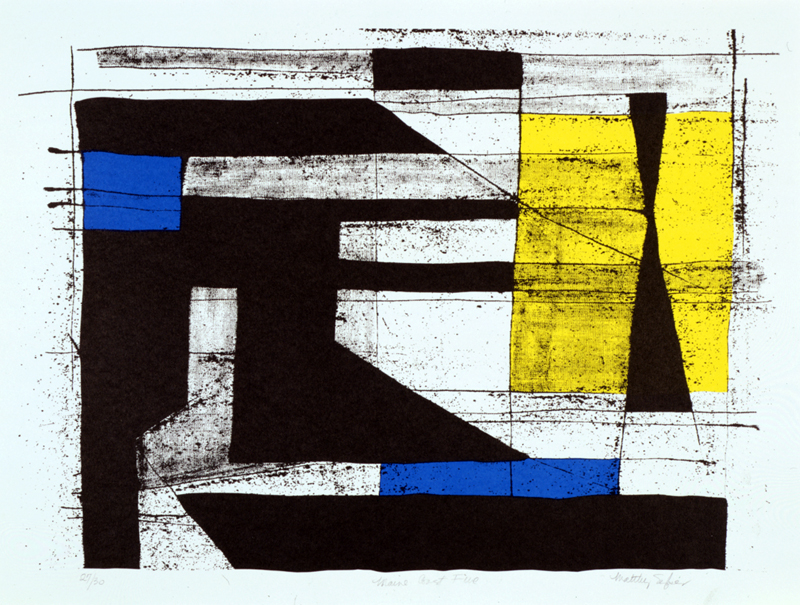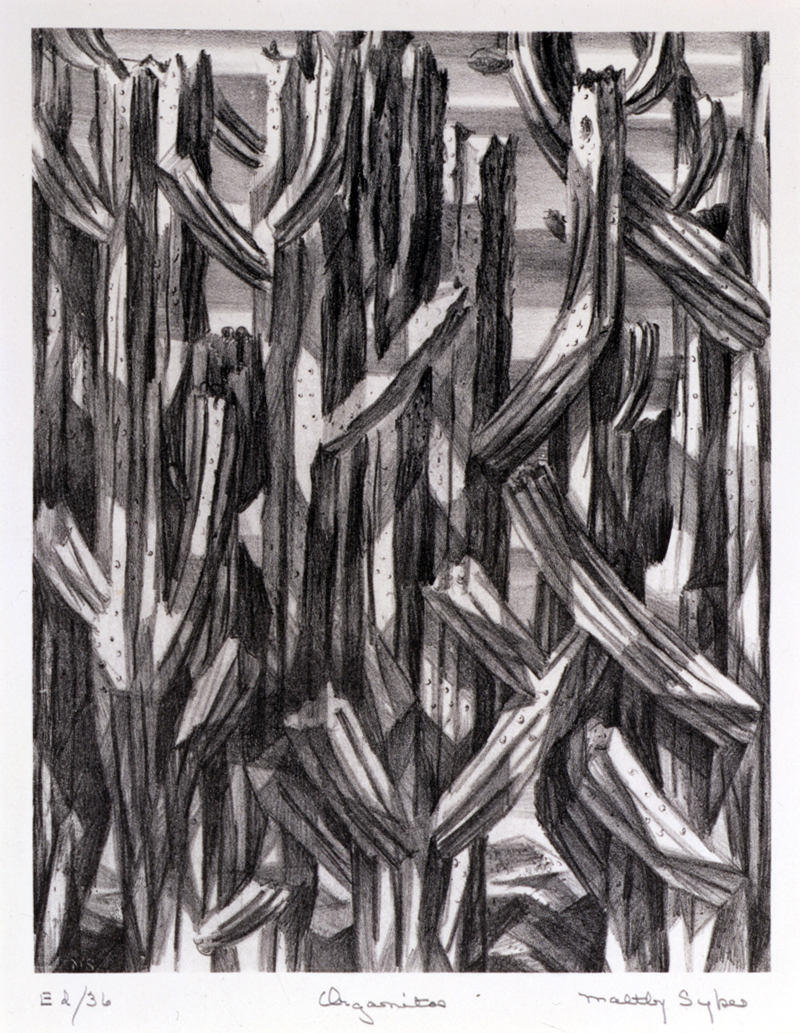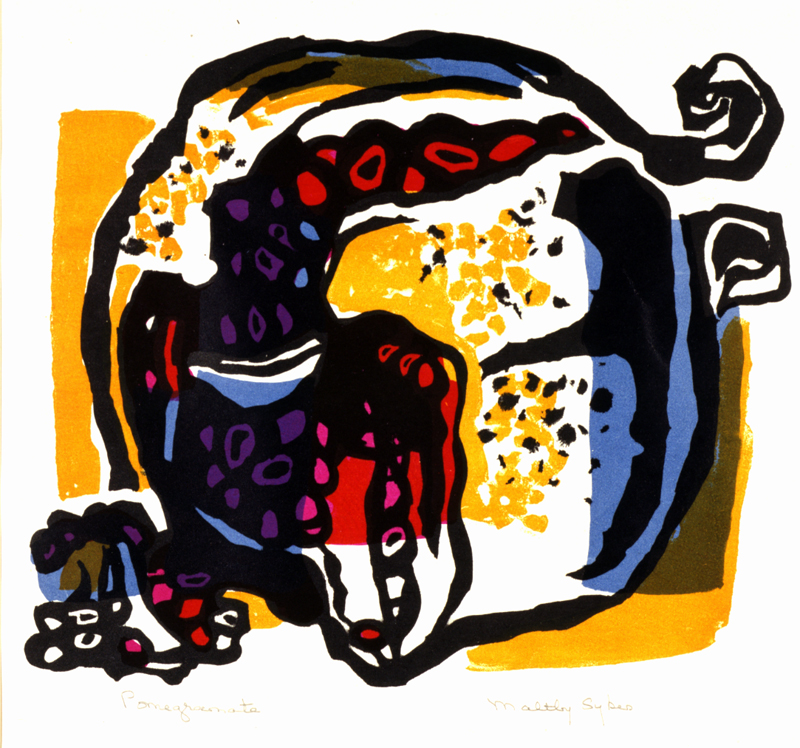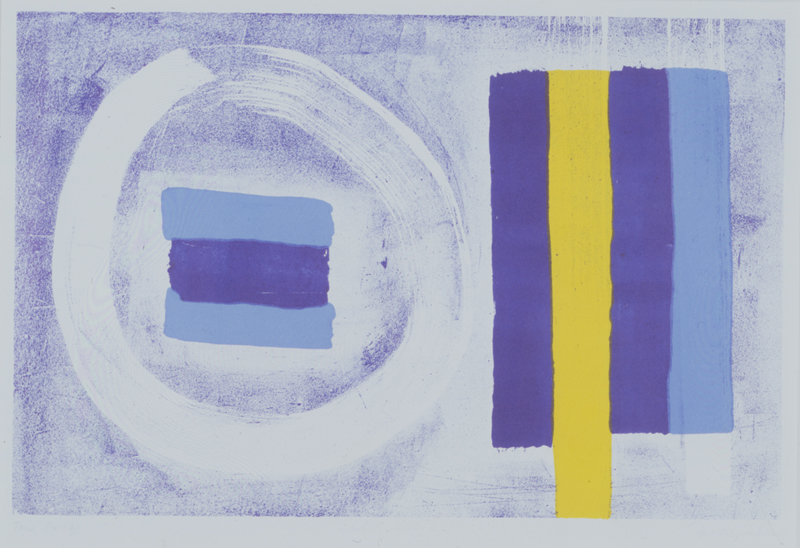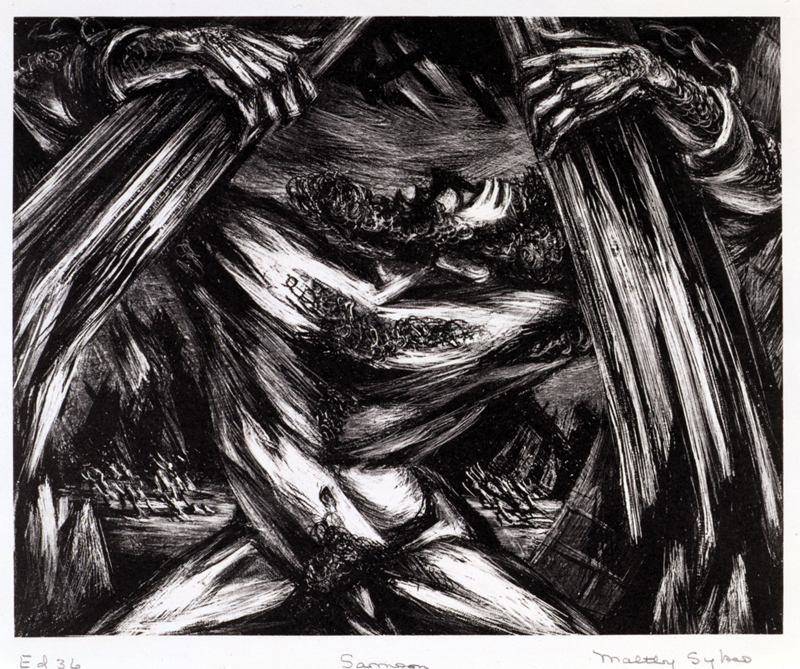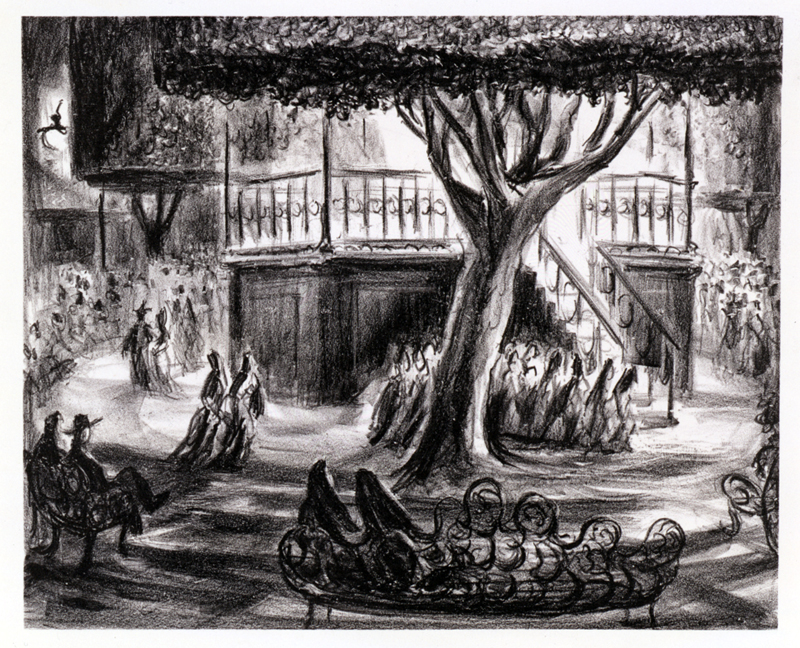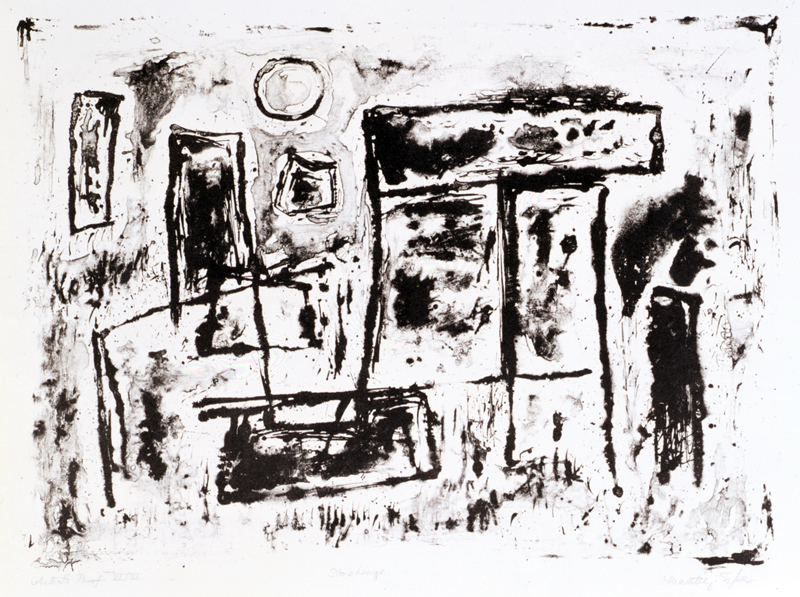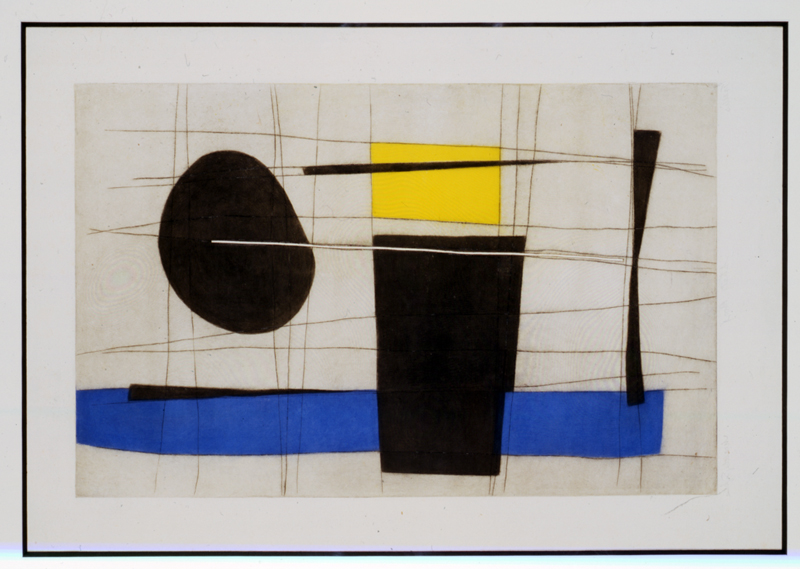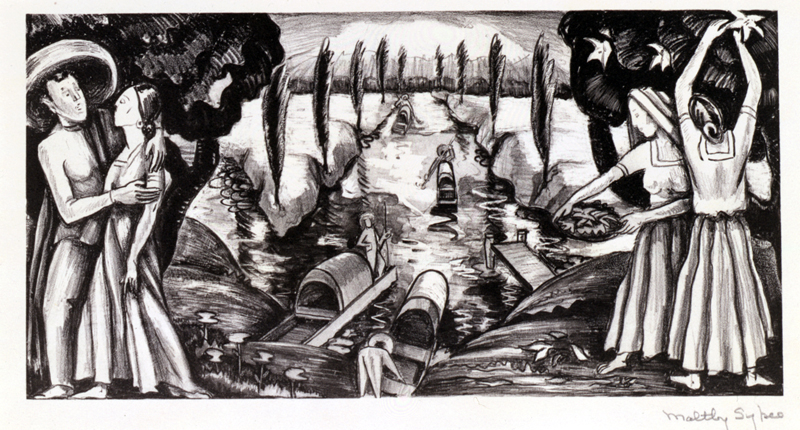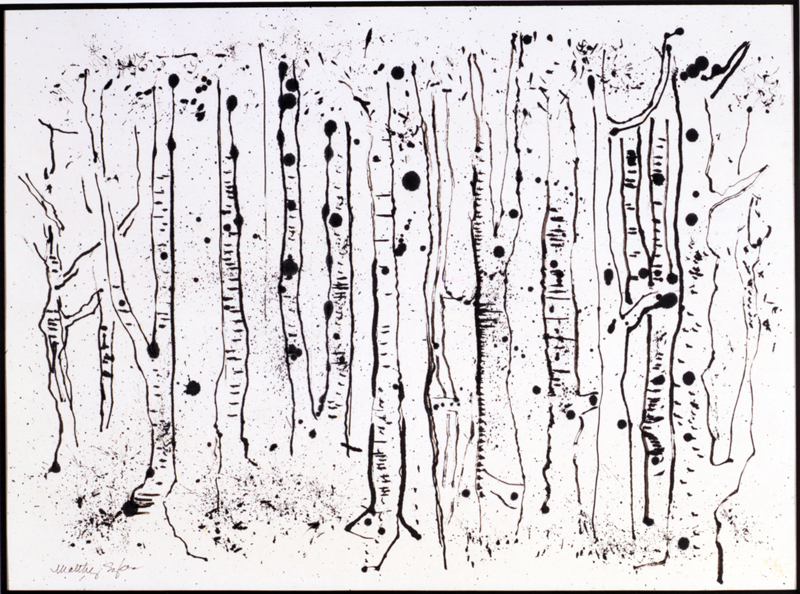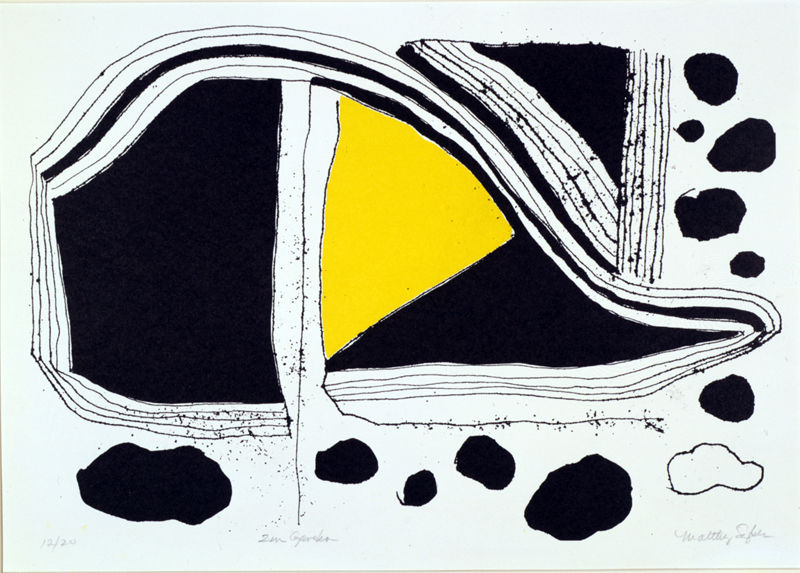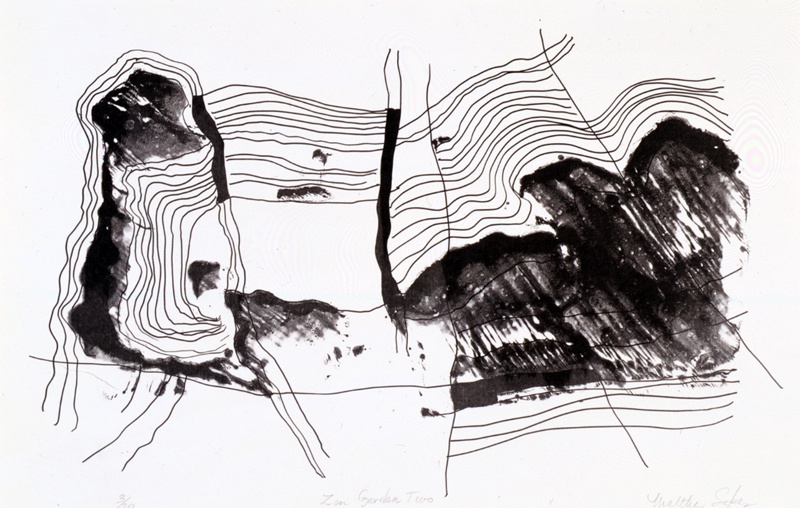Carlisle Gallery is proud to work directly with the Estate of Maltby Sykes.
Born William Paul Maltby Sykes in 1911, Maltby Sykes was an American Regionalist artist best known for his innovative approach to printmaking. Sykes enjoyed a long and prolific career as a painter, printmaker, and art instructor.
Life
Born in Aberdeen, Mississippi, Sykes spent most of his childhood in Birmingham, Alabama. He met his first professional artist, sculptor Gutzon Borglum, while he was in his early teens during a visit with family friends in Stone Mountain, Georgia. Sykes was immediately impressed by the respect that Borglum commanded. From this early encounter, Sykes made the decision to dedicate his life to becoming an artist.
After completing high school in Tuscaloosa, Alabama, Sykes returned to Birmingham where he met the well-known portrait painter, Wayman Adams. In the summer of 1934, Sykes attended Adams’ art school in Elizabethtown, New York, and worked as a clerk in exchange for instruction. The student and teacher formed a strong friendship, and it was Adams who first suggested that Sykes begin using the name “Maltby,” instead of William, because it was more unique.
While in Elizabethtown, Sykes was given the opportunity to observe the master American printmaker George C. Miller at work, which quickly instilled in him what would become a deep and abiding interest in lithography. Sykes was drawn to the lithographic process and, impressed with his young pupil, Miller offered to write Sykes a letter of introduction to Mexican muralist Diego Rivera wen he learned Sykes would be traveling to Mexico that winter. The following year, Sykes was invited by Rivera to work as an assistant for his mural painting at the Hotel de la Reforma in Mexico City. This formative apprenticeship had a profound effect on Sykes’ work, evidenced in his drawings and paintings from the period.
In 1937, Sykes returned to the Northeast and continued to study with Miller and Adams. He painted murals, exhibited paintings at the Ferargil Galleries, and studied with noted American artist John Sloan at the Art Students League of New York. By the early 1940s, Sykes found himself in the South once more where he began to establish a name for himself as a portrait painter. In addition to society portraits, Sykes received many commissions for portraits of historical figures from Alabama history. In 1941, he accepted a teaching position at Alabama Polytechnic Institute (now Auburn University). With the outbreak of World War II, Sykes’ teaching career came to an abrupt halt and he joined the Air Force. He was sent to the Pacific where he worked as a combat artist in Guam and Iwo Jima, recording scenes from the recently secured Mariana Islands. Sykes also produced three lithographs chronicling his basic training, including Chow (1944).
In the fall of 1945, Sykes resumed teaching at Auburn. Through his friendship with Miller, he was able to secure rare printmaking supplies for his students and himself. After purchasing a printing press in 1950, Sykes introduced the first printmaking class to the university’s art curriculum. In 1951, he traveled to Paris on the GI Bill and studied with Fernand Léger. Sykes also met with intaglio printmaker Stanley William Hayter on this trip, who was a proponent of permitting the composition to be dictated by the surface and materials in use, rather than the more traditional approach of manipulating the materials in a conscious act of drawing. This Surrealist-inspired mode of printmaking and Léger’s geometric abstractions shaped the direction that Sykes’ art would take in the coming years. Returning to Paris two years later, he studied with André Lhote, furthering his work’s shift toward abstraction.
In the mid-1960s, Sykes married Marjorie Tyre, a classical harpist with the Metropolitan Opera in New York City whom he had met as a young man in Birmingham and with whom he had shared a friendship for many years. The two settled in Auburn to begin their married life and, in 1967, Sykes became Auburn’s first Artist-in-Residence. The following year, Sykes traveled to Japan with a group of students to study traditional Japanese printmaking. He and his wife Marjorie spent summers in Boothbay, Maine, where he produced abstractions based on forms from the natural environment. In 1977, Sykes retired from the Auburn faculty and was named Professor Emeritus. He suffered a heart attack in 1979 that brought his prolific career to a sudden halt. Sykes died in 1992 at the age of eighty.
Legacy
Over his long career as an artist and teacher, Sykes helped to turn printmaking into a legitimate art form of its own, not simply a method of copying. He was a member of the Alabama Art League, the Alabama Watercolor Society, and the Southeastern Art Association. He exhibited his work widely, and his paintings and prints were purchased by such notable institutions as the Metropolitan Museum of Art, the Smithsonian Institution, the Brooklyn Museum, the Boston Museum of Fine Arts, the Museum of Modern Art, the Air Force Museum, and the Philadelphia Museum of Art for their permanent collections. Late in life, he credited the act of teaching with giving him the drive to investigate new and modern ideas. He said, “I feel I would have missed something if I had never started to approach art from a cerebral as well as a retinal concept. So the big influence, I think, on my life was just getting into teaching.”
In a 1983 essay entitled, "Recollections of a Lithographile," Sykes discussed the trajectory of his stylistic development, which ranged from traditional realism to the highly abstract work of his final years.[9] Sykes gave this explanation: "In the course of a lifetime, artists do, in fact, develop several visual personalities. They are witnesses of their own time and it is inevitable that their work should reflect the succession of ideologies, technologies, and social attitudes that occur. Change has been a major characteristic of the art of this century. My own prints have shifted from realism through semi-abstraction and abstraction, with technique, process, and materials influencing the image to a pronounced degree."
In 2005, the Georgia Museum of Art curated a retrospective exhibition of Sykes' work entitled, "The Spirit of the Modern: Drawings and Graphics by Maltby Sykes."[10] The exhibition opened at the Georgia Museum of Art in Athens and then traveled to the Mobile Museum of Art in Mobile, Alabama, and the Jule Collins Smith Museum of Art at Auburn University. Sykes' life and work was the subject of the 2012 film, Maltby Sykes: Gentleman Modernist, by Dale Schierholt, produced for the Jule Collins Smith Museum at Auburn University
When Maltby Sykes met Marjorie Tyre, it was a match made in artistic heaven. Marjorie was a classical harpist of the highest distinction with the Metropolitan Opera in New York City. Maltby had met her as a young man in Birmingham and had maintained a friendship for many decades before they married in the 1960s.
One particularly serendipitous anecdote involves Sykes’ painting, Trio, now in the collection of the Jule Collins Smith Museum of Fine Art at Auburn University. Executed in 1936 during Maltby’s apprenticeship with Diego Rivera in Mexico, the oil portrait depicts the famous international musical trio led by harpist Carlos Salzedo, which was then performing in Mexico City. Unbeknownst to Maltby, some 25 years before he would marry Marjorie, Salzedo would later become Marjorie’s most influential teacher.
“The Trio: Barrere, Salzedo, and Britt” by Maltby Sykes, oil on canvas, 1936.
Collection of the Jule Collins Smith Museum of Fine Art at Auburn University.
Carlisle Gallery has worked closely with the Estate of Maltby Sykes
to place countless pieces in important public and private collections.
Sykes’ work is also available at Momentum Gallery in Asheville, NC.
To inquire about available work, please use the button below.

